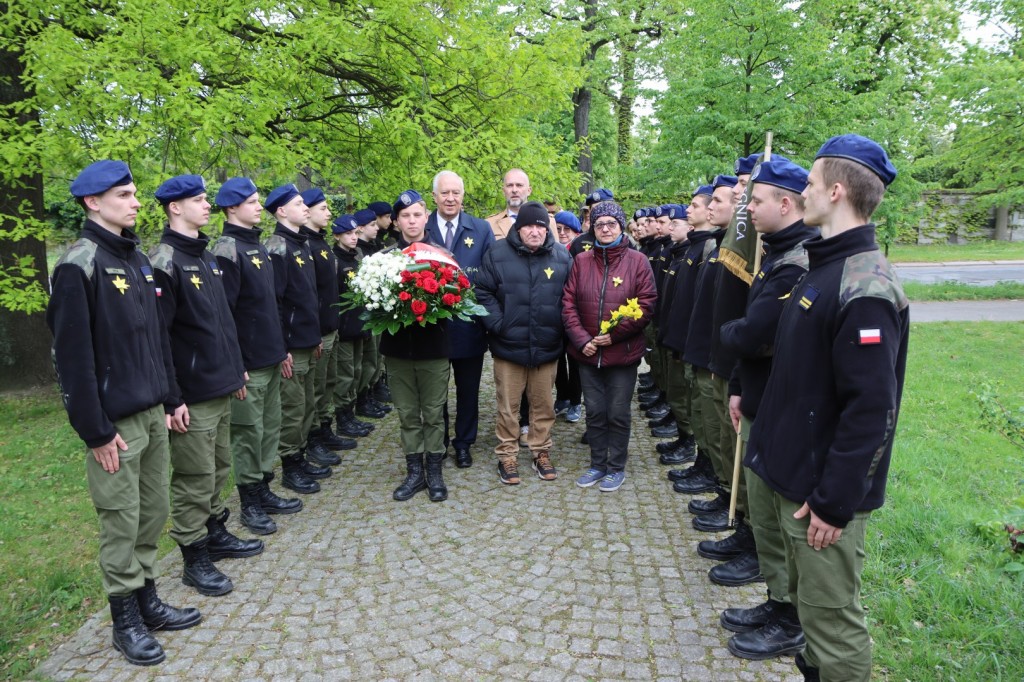19.04.2024
We honored the memory of the Warsaw Ghetto Uprising
Legnica celebrated today (April 19) the 81st anniversary of the Warsaw Ghetto Uprising. A prayer for the dead was said in front of the obelisk commemorating the heroes of the uprising, flowers were laid and candles were lit.
The celebrations were attended by representatives of the Jewish community, city authorities including President Tadeusz Krzakowski, students of the 7th Secondary School and residents.
Traditionally, the meeting participants pinned yellow daffodils to their clothes, which are a symbol of memory of the Warsaw Ghetto Uprising.
The Warsaw Ghetto Uprising was the first large urban uprising in occupied Europe. It was an act of despair, a tragic cry for a dignified death for people doomed to inevitable destruction, because it had no chance of success.
The immediate cause of the outbreak of the uprising were actions aimed at liquidating the ghetto and murdering its inhabitants. It began on April 19, 1943, on the eve of the Jewish holiday of Passover, when in the so-called There were only about 50-70 thousand Jews in the residual ghetto (compared to almost half a million at the peak of its population). It lasted less than a month – until mid-May. The fighting took place in the center of the capital, while at the same time being “outside it”, in a closed district, separated from the Aryan part by a wall. In an unequal fight, poorly armed fighters of the Jewish Combat Organization (ŻOB) and the Jewish Military Union (ŻZW) determinedly resisted soldiers from the SS, Wehrmacht, Security Police and auxiliary formations. The Germans methodically reduced the ghetto to ruins, burning house after house.
Only a few insurgents managed to get beyond the walls through the sewers. One of them was the last ŻOB commander, Marek Edelman, who died in 2009. The symbolic date of the end of the uprising is May 16, 1943, the date of blowing up the Great Synagogue in Tłomackie. Jürgen Stroop, responsible for the liquidation of the ghetto and suppressing the uprising, wrote in his report: The former Jewish residential district no longer exists! SHowever, sporadic fighting in the ruins lasted until June 1943.
The captured insurgents and civilians were murdered on the spot or deported to the camps at Majdanek, Poniatowa and Trawniki. The area of the Jewish district was burned and razed to the ground. Due to its symbolic significance, the Warsaw Ghetto Uprising is considered by the Jewish nation to be one of the most important events in its history.
Published by: Zygmunt Mułek | Added: 19/04/2024 | Views: 255
Back to the news list


